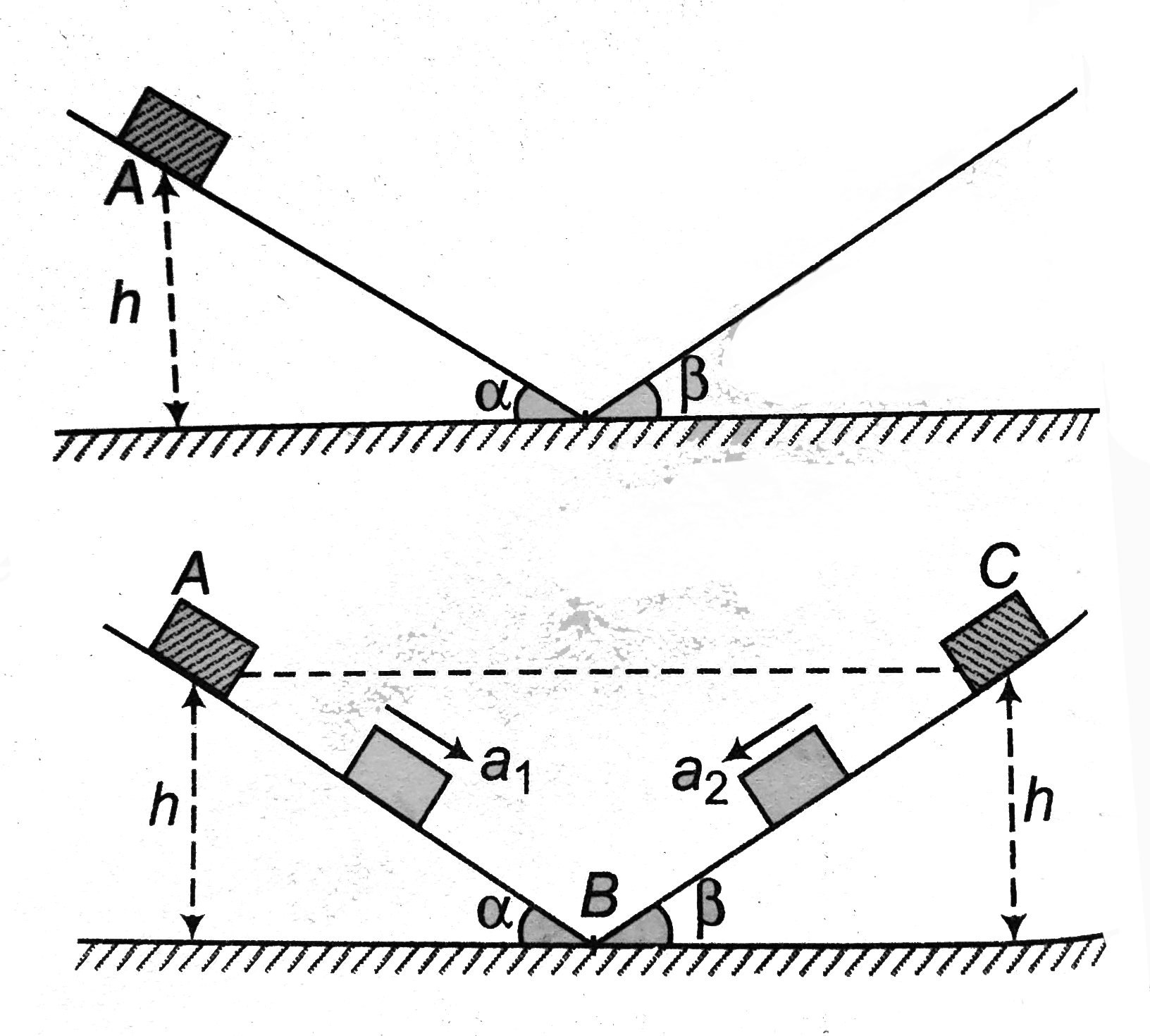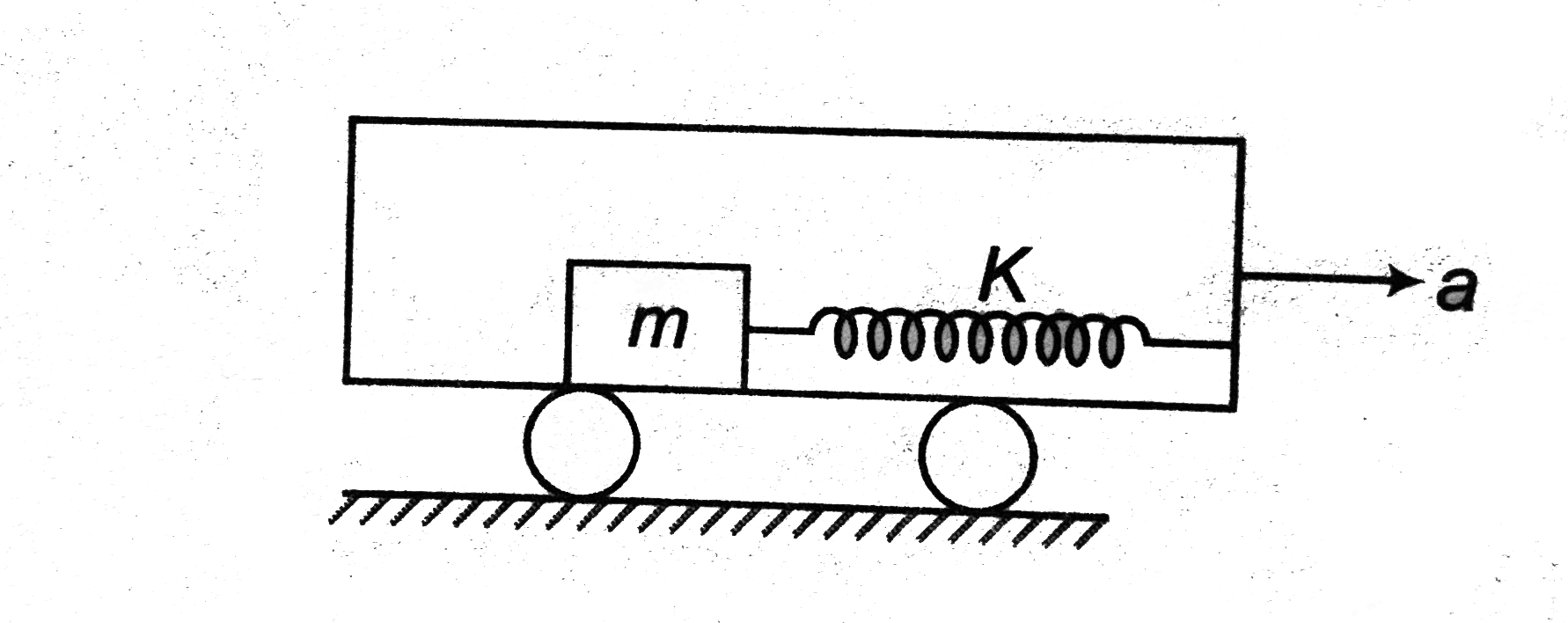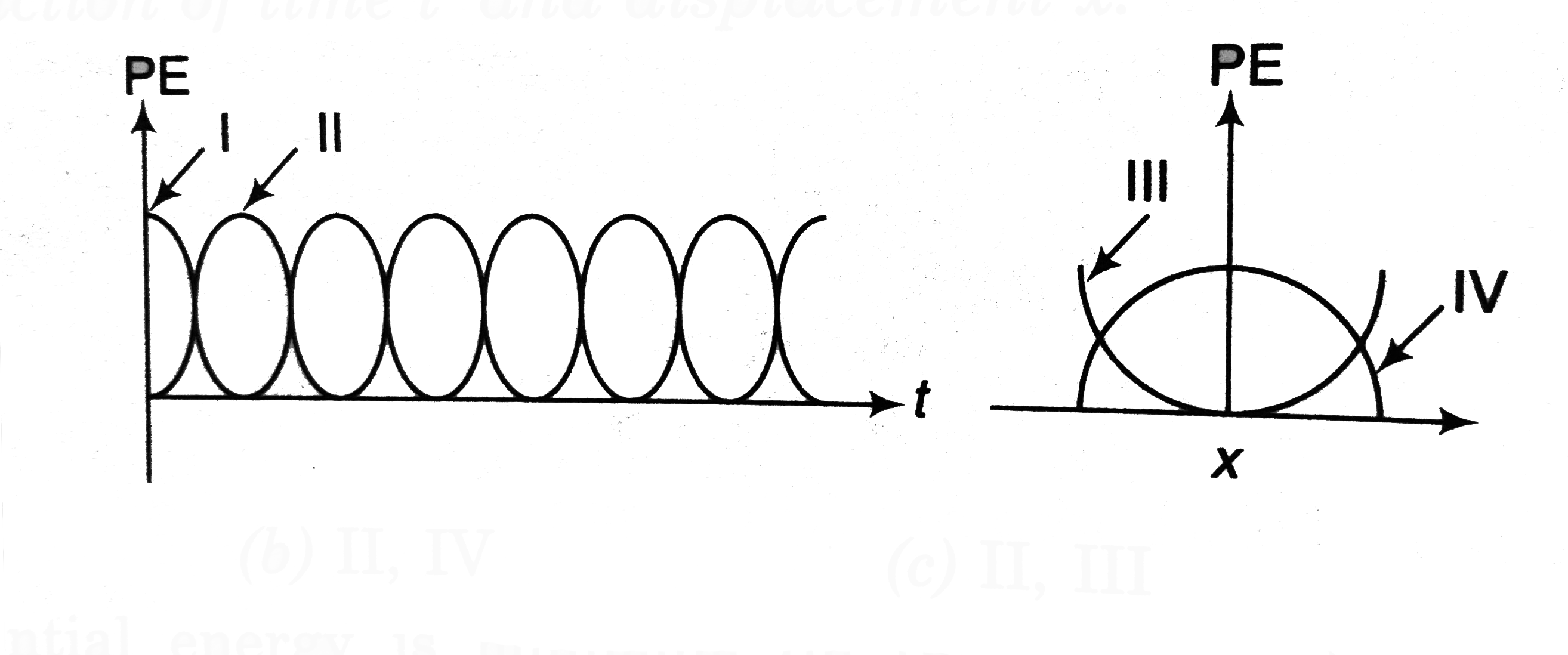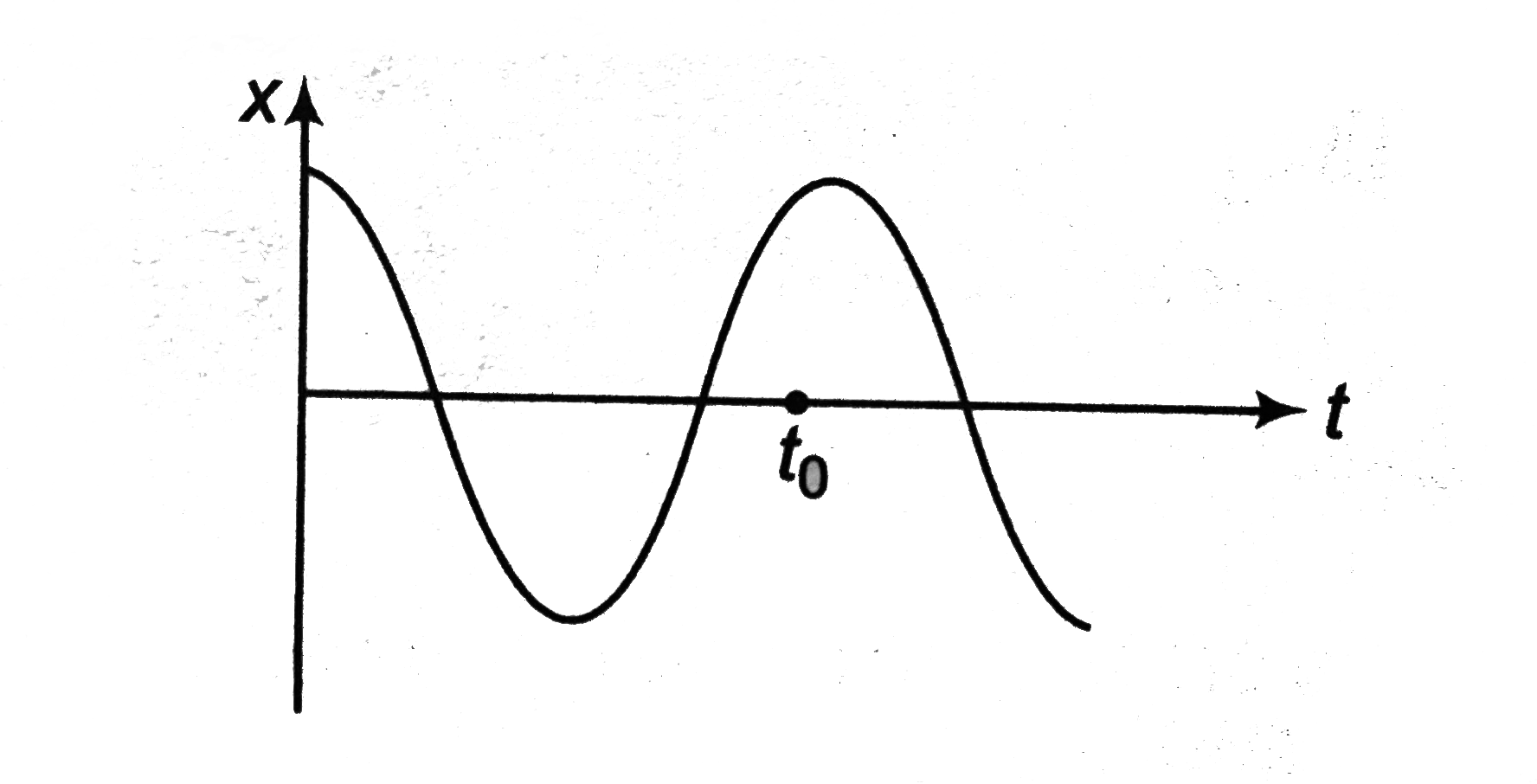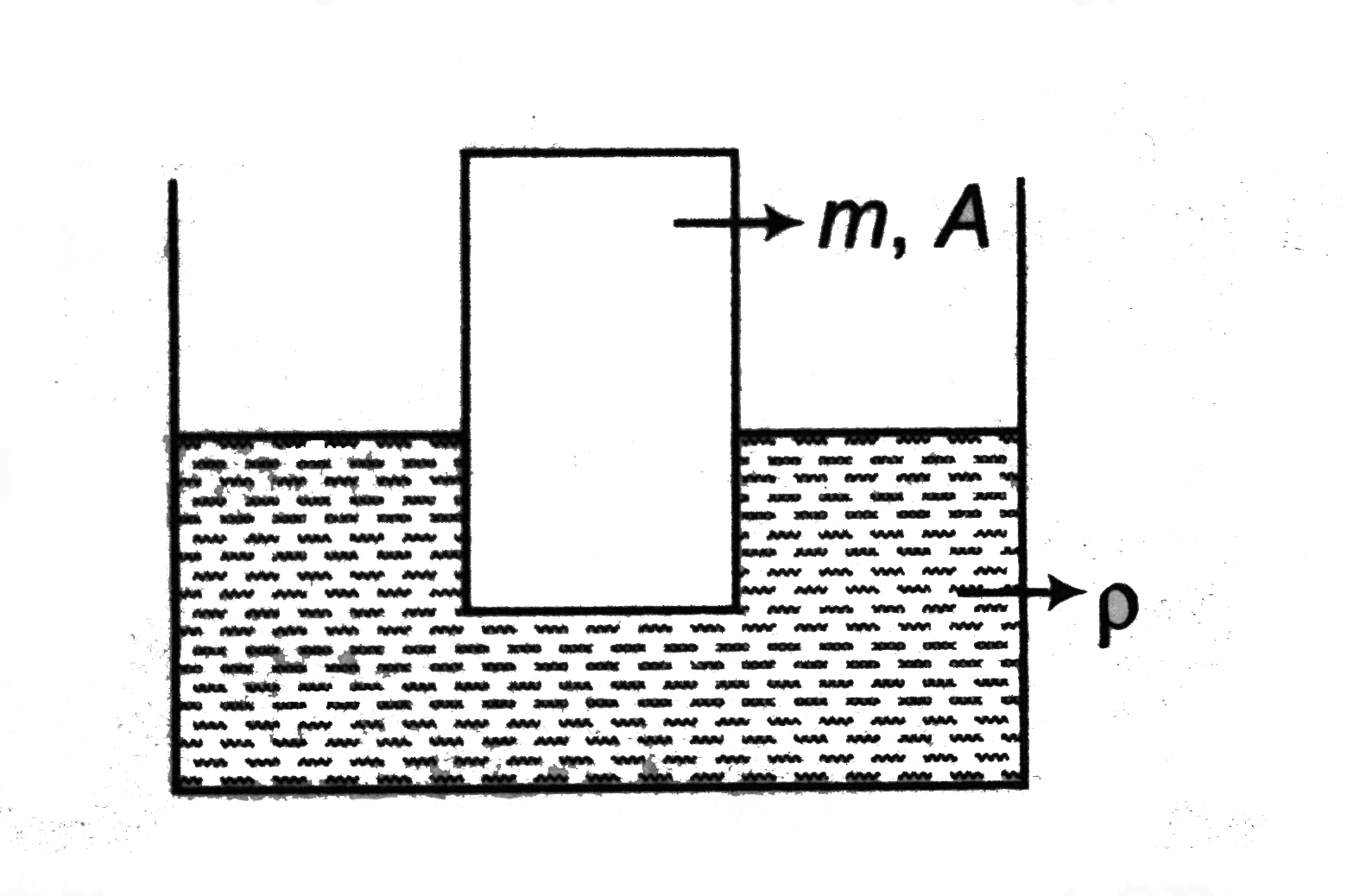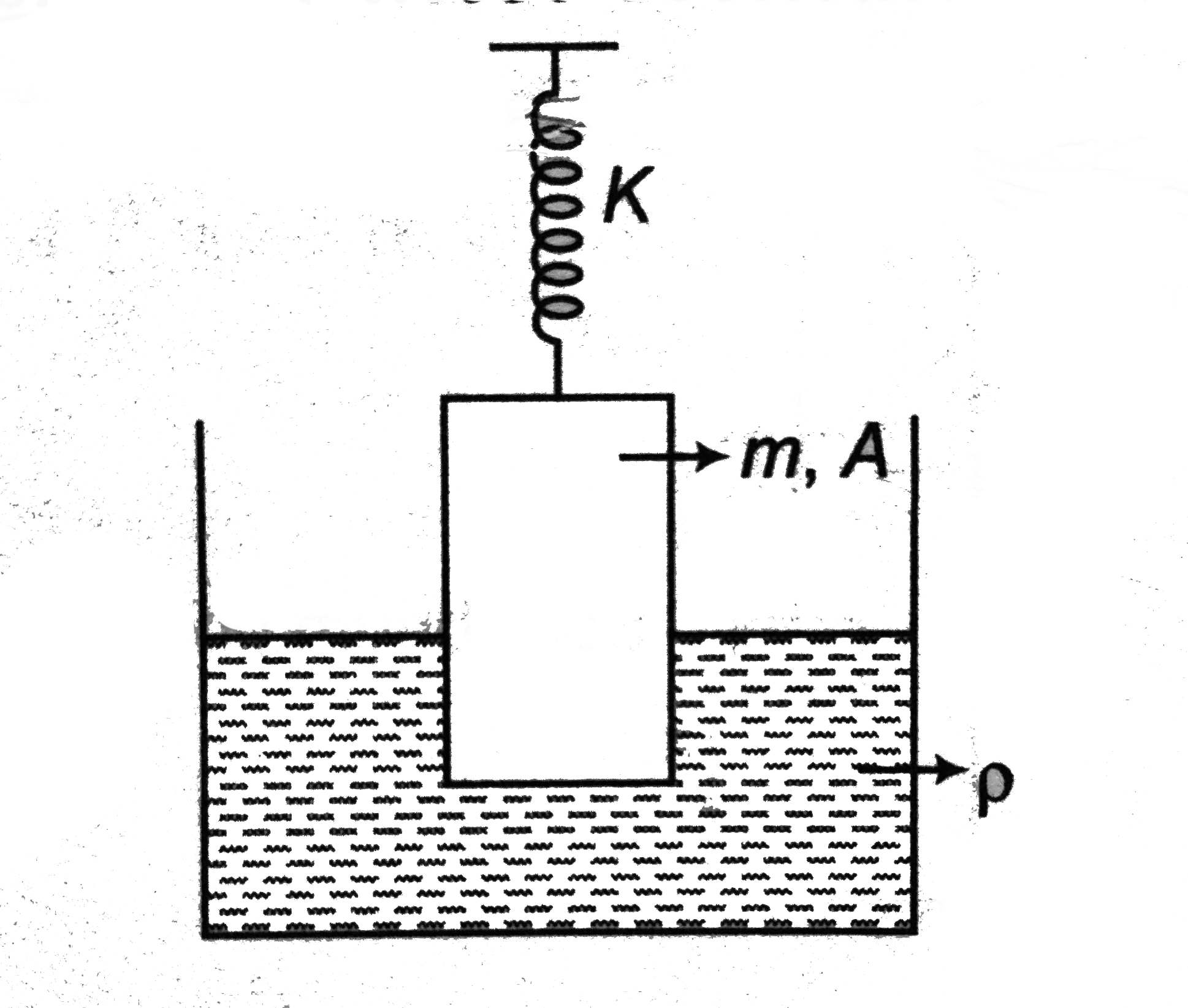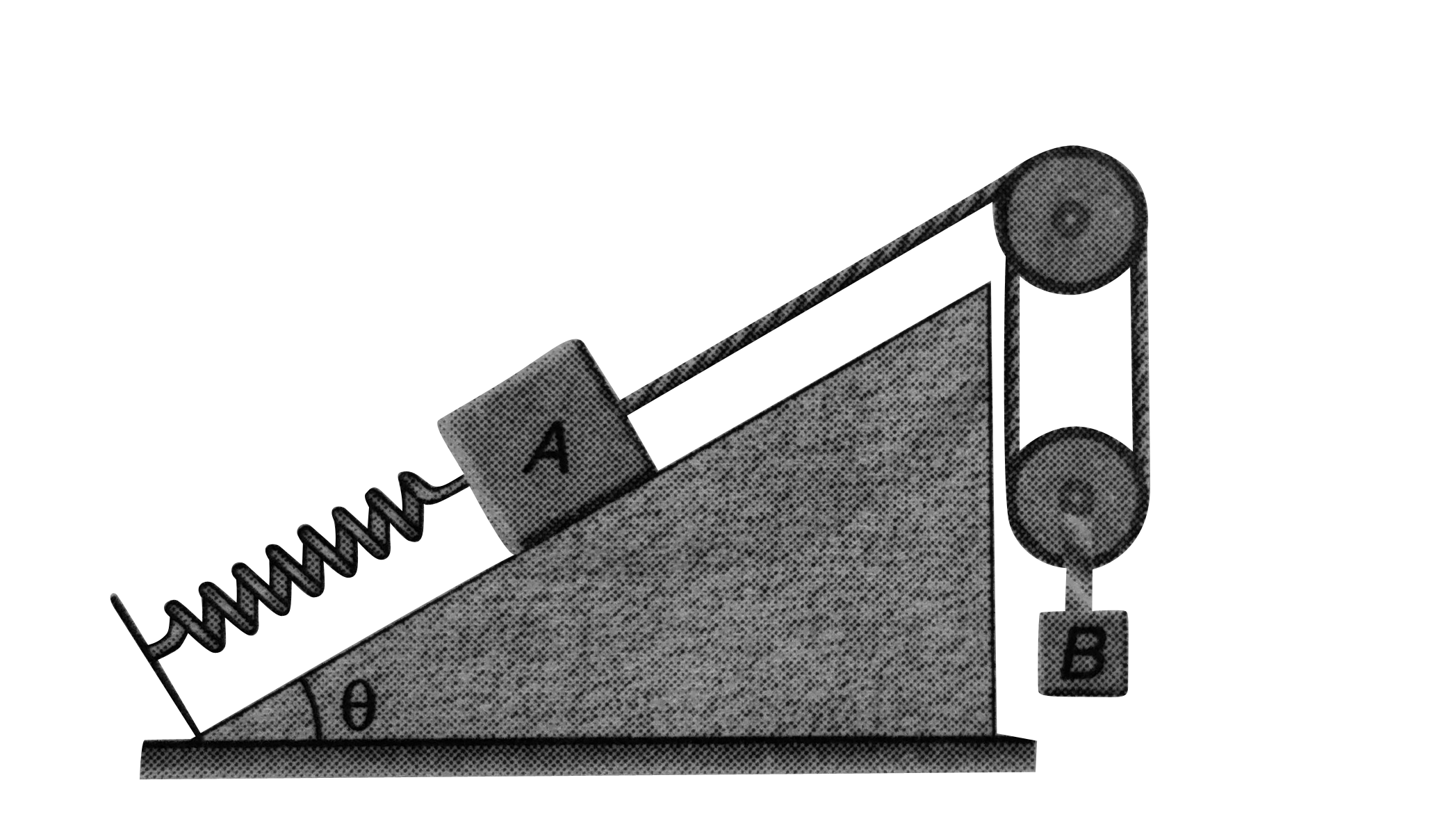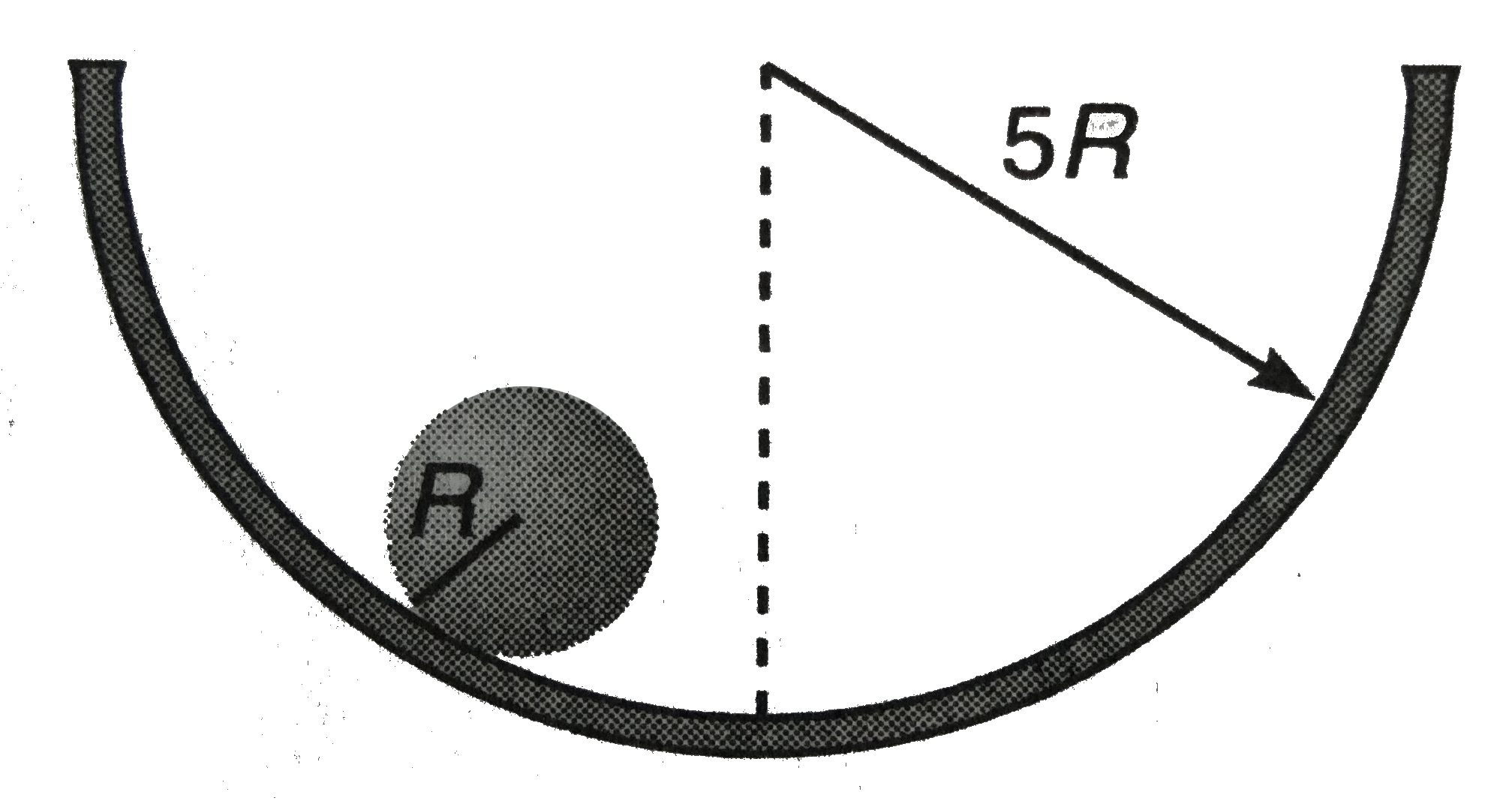Example Type 5 from DC PANDEY ENGLISH SIMPLE HARMONIC MOTION for Class 11
| Class 11 | PHYSICS |
| Chapter | SIMPLE HARMONIC MOTION |
| DC PANDEY ENGLISH | Example Type 5 |
| Medium | English |
| Academic Year | 2023-2024 |
Question 6
The potential energy of a particle oscillating along x-axis is given as
U=20+(x−2)2
Here, U is in joules and x in meters. Total mechanical energy of the particle is 36J.
(a) State whether the motion of the particle is simple harmonic or not.
(b) Find the mean position.
(c) Find the maximum kinetic energy of the particle. View SolutionQuestion 10
A particle executes simple harmonic motion about the point x=0. At time t=0, it has displacement x=2cm and zero velocity. If the frequency of motion is 0.25s−1, find (a) the period, (b) angular frequency, ( c) the amplitude, (d) maximum speed, (e) the displacement from the mean position at t=3sand (f) the velocity at t=3s.View SolutionQuestion 21
A mass is suspended separately by two springs and the time periods in the two cases are T1 and T2. Now the same mass is connected in parallel (K=K1+K2) with the springs and the time is suppose TP. Similarly time period in series is TS, then find the relation between T1,T2 and TP in the first case and T1,T2 and TS in the second case. View SolutionQuestion 23
With the assumption of no slipping, determine the mass m of the block which must be placed on the top of a 6kg cart in order that the system period is 0.75s. What is the minimum coefficient of static friction μs for which the block will not slip relative to the cart is displaced 50mm from the equilibrium position and released? Take (g=9.8m/s2).
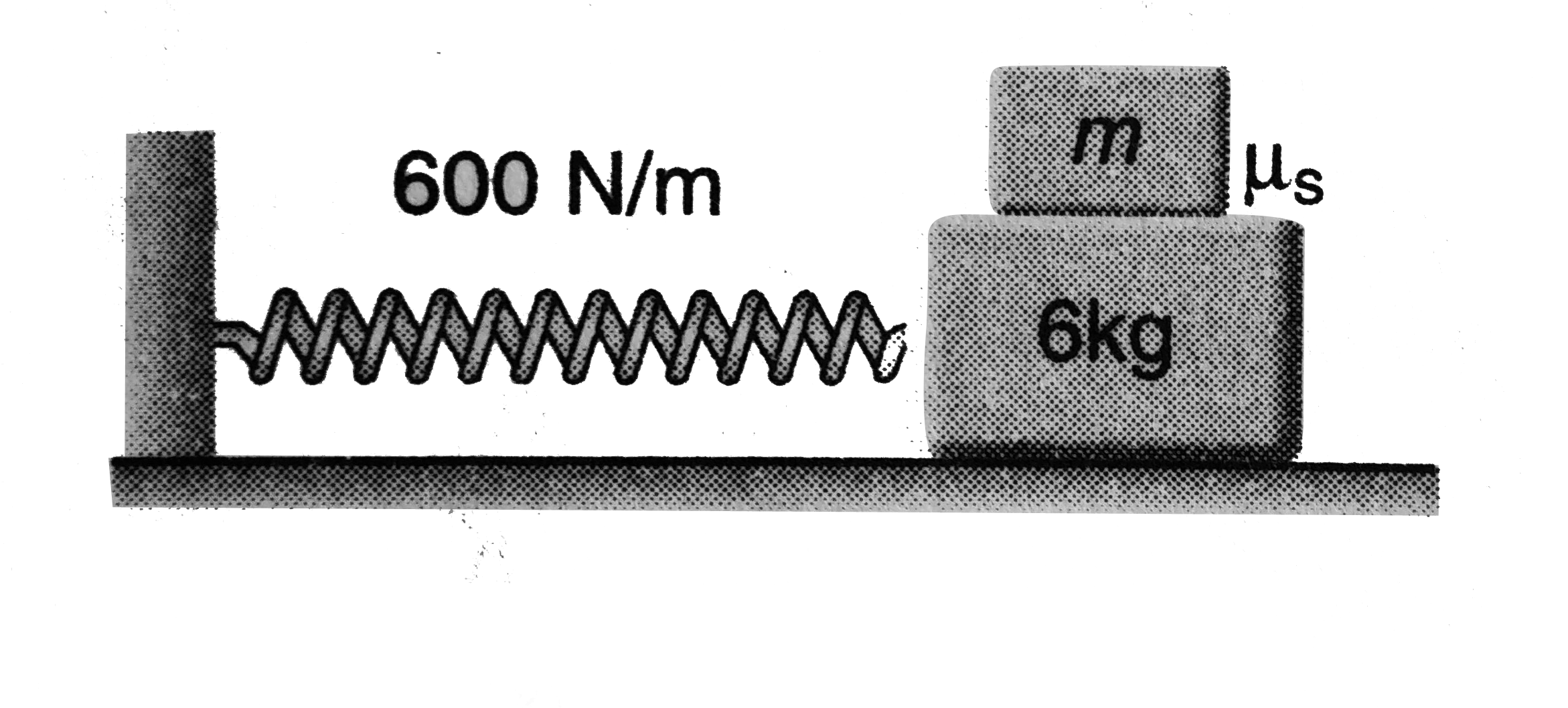 View Solution
View SolutionQuestion 26
A spring block system is kept inside a lift moving with a constant velocity v0 as shown in figure. Block is in equilibrium and at rest with respect to lift. The lift is suddenly stopped at time t=0. Taking upward direction as the positive direction, write x−t equation of the block.
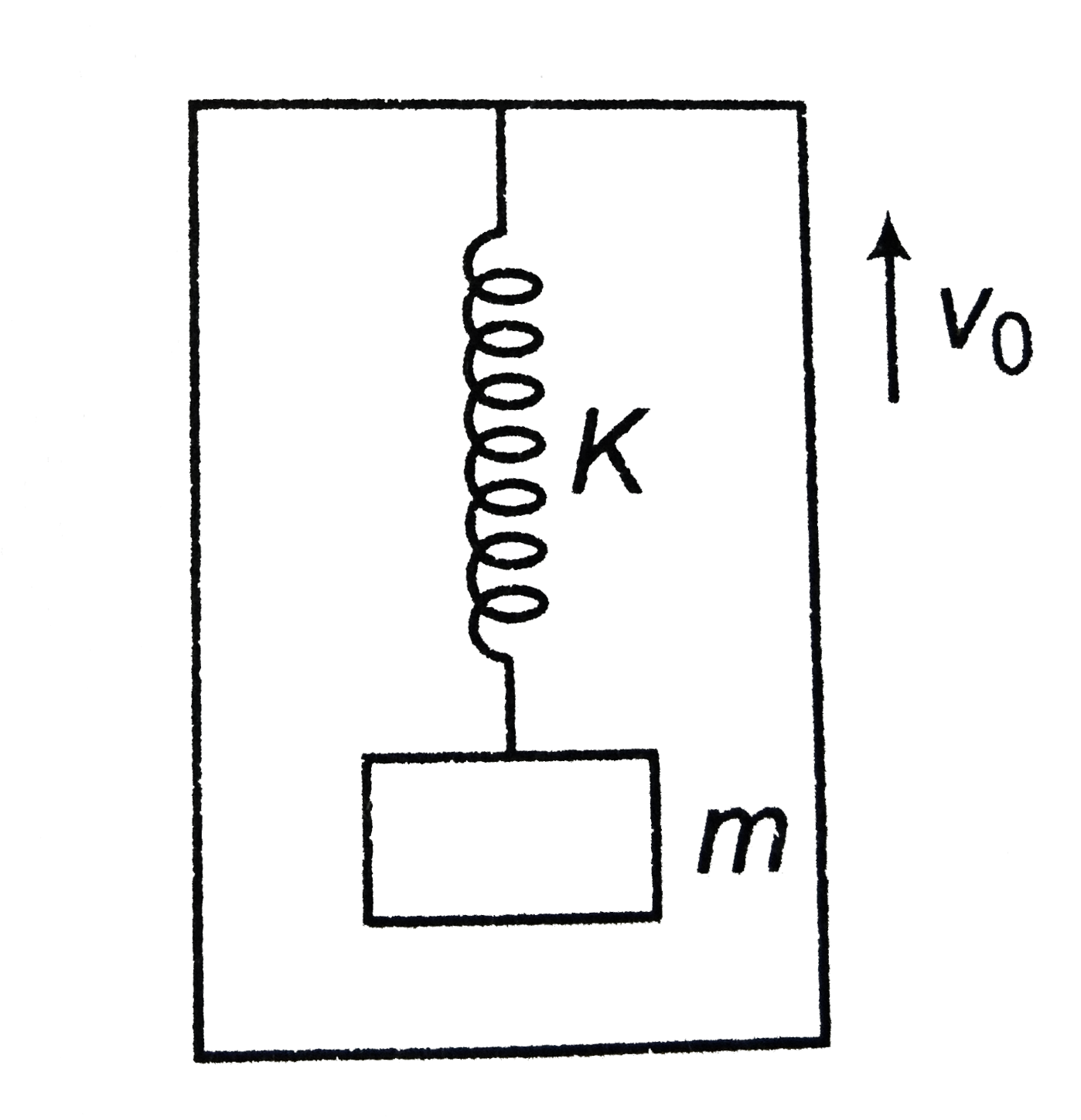 View Solution
View SolutionQuestion 27
One end of an ideal spring is fixed to a wall at origin O and axis of spring is parallel to x-axis. A block of mass m=1kg is attached to free end of the spring and it is performing SHM. Equation of position of the block in co-ordinate system shown in figure is x=10+3sin(10t). Here, t is in second and x in cm. Another block of mass M=3kg, moving towards the origin with velocity 30cm/s collides with the block performing SHM at t=0 and gets stuck to it. Calculate

(a) new amplitude of oscillations,
(b) neweqution for position of the combined body,
( c) loss of energy during collision. Neglect friction.View SolutionQuestion 28
A pendulum has a period T for small oscillations. An obstacle is placed directly beneath the pivot, so that only the lowest one - quarter of the string can follow the pendulum bob when it swings to the left of its resting position. The pendulum is released from rest at a certain point. How long will it take to return to that point again ? In answering this question, you may assume that the angle between the moving string and the vertical stays small throughout the motion.
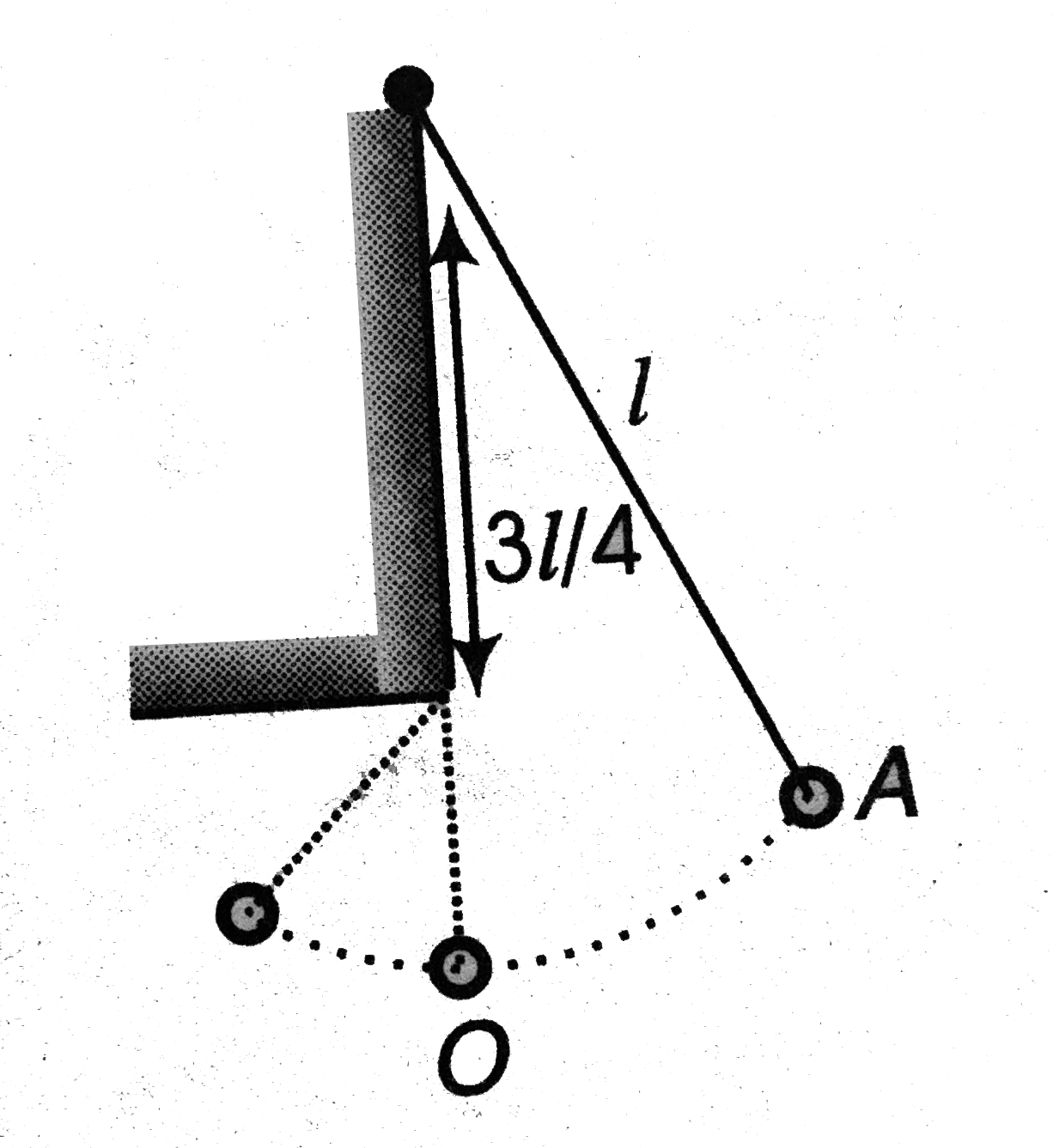 View Solution
View SolutionQuestion 30
Two light spring of force constants k1 and k2 and a block of mass m are in one line AB on a smooth horizontal table such that one end of each spring is fixed on rigid supports and the other end is free as shown in the figure. The distance CD between the spring is 60cm. If the block moves along AB with a velocity 120cm/s in between the springs, calculate the period of oscillation of the block. (take k1=1.8N/m, k2=3.2N/m, m=200g)
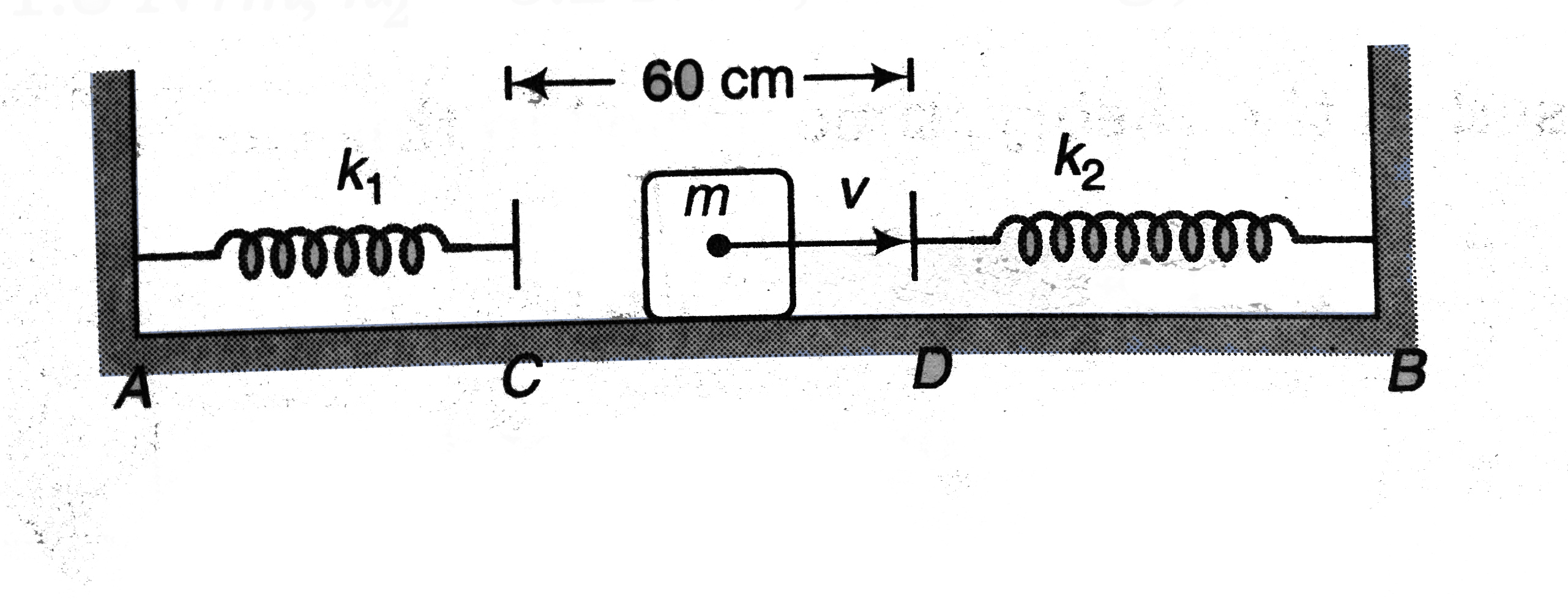 View Solution
View SolutionQuestion 38
The system shown in the figure can move on a smooth surface. They are initially compressed by 6cm and then released, then choose the correct options.

(a) The system performs, SHM with time period π10s
(b) The block of mass 3kg perform SHM with amplitude 4cm
( c) The block of mass 6kg will have maximum momentum of 2.40kg−m/s
(d) The time periods of two blocks are in the ratio of 1:√2 View SolutionQuestion 43
Two particles move parallel to x−axis about the origin with same amplitude 'a' and frequency ω. At a certain instant they are found at a distance a/3 from the origin on opposite sides but their velocities are in the same direction. What is the phase difference between the two? View SolutionQuestion 44
For the arrangement shown in figure, the spring is initially compressed by 3cm. When the spring is released the block collides with the wall and rebounds to compress the spring again.

(a) If the coefficient of restitution is 1√2 , find the maximum compression in the spring after collision.
(b) If the time starts at the instant when spring is released, find the minimum time after which the block becomes stationary. View SolutionQuestion 45
A long uniform rod of length L and mass M is free to rotate in a horizontal plane about a vertical axis through its one end 'O'. A spring of force constant k is connected between one end of the rod and PQ. When the rod is in equilibrium it is parallel to PQ.

(a)What is the period of small oscillation that result when the rod is rotated slightly and released ?
(b) What will be the maximum speed of the displacement end of the rod, if the amplitude of motion is θ0?View SolutionQuestion 46
A block with a mass of 2kg hangs without vibrating at the end of a spring of spring constant 500N/m, which is attached to the ceiling of an elevator. The elevator is moving upwards with an acceleration g3. At time t=0, the acceleration suddenly ceases.
(a) What is the angular frequency of oscillation of the block after the acceleration ceases ?
(b) By what amount is the spring stretched during the time when the elevator is accelerating ?
(c )What is the amplitude of oscillation and initial phase angle observed by a rider in the elevator in the equation, x=Asin(ωt+ϕ) ? Take the upward direction to be positive. Take g=10.0m/s2. View SolutionQuestion 49
Consider the earth as a uniform sphere if mass M and radius R. Imagine a straight smooth tunnel made through the earth which connects any two points on its surface. Show that the motion of a particle of mass m along this tunnel under the action of gravitation would be simple harmonic. Hence, determine the time that a particle would take to go from one end to the other through the tunnel.View Solution
All Exercises from DC PANDEY ENGLISH Class 11 PHYSICS SIMPLE HARMONIC MOTION
- ASSERTION AND REASON
- CHAPTER EXERCISES
- CHECK POINT 11.1
- CHECK POINT 11.2
- CHECK POINT 11.3
- CHECK POINT 11.4
- COMPREHENSION TYPES
- EXERCISE 14.1
- EXERCISE 14.2
- EXERCISE 14.3
- EXERCISE 14.4
- INTEGER TYPE QUESTIONS
- INTRO. EXER.
- JEE ADVANCED
- LEVEL 1 ASSERTION AND REASON
- LEVEL 1 SINGLE CORRECT
- LEVEL 1 SUBJECTIVE
- LEVEL 2 COMPREHENSION
- LEVEL 2 MORE THAN ONE CORRECT
- LEVEL 2 SINGLE CORRECT
- LEVEL 2 SUBJECTIVE
- MATCH THE COLUMNS
- MATRIX MATCHING TYPE QUESTIONS
- MEDICAL ENTRACES GALLERY
- MORE THAN ONE OPTION IS CORRECT
- ONLY ONE QUESTION IS CORRECT
- EXAMPLE
- EXAMPLE TYPE 1
- EXAMPLE TYPE 10
- EXAMPLE TYPE 11
- EXAMPLE TYPE 12
- EXAMPLE TYPE 13
- EXAMPLE TYPE 2
- EXAMPLE TYPE 3
- EXAMPLE TYPE 4
- EXAMPLE TYPE 5
- EXAMPLE TYPE 6
- EXAMPLE TYPE 7
- EXAMPLE TYPE 8
- EXAMPLE TYPE 9
- EXAMPLES
- MISCELLANEOUS EXAMPLES

 .
. 
